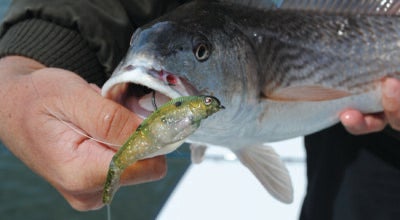Crystal Cockman Column: Morrow Mountain State Park’s hidden longleaf pine
Published 4:04 pm Sunday, August 12, 2018
Native to the Southeastern United States, the longleaf pine (Pinus palustris) once covered an area larger than 92 million acres.

Crystal Cockman writes a column for The SNAP through the LandTrust of
Largely as a result of over-harvesting and deforestation, the longleaf pine is located now on only about 3 percent of the area that it historically covered, and the majority of this is reforested longleaf.
This unique and diverse ecosystem houses a number of endemic and rare species, and requires regular prescribed burns to maintain and encourage forest health. The federally endangered red-cockaded woodpecker (RCW), the pygmy rattlesnake, the fox squirrel and the pine barrens tree frog are just a few of the unique species who call longleaf forests home.
Historically, longleaf pine trees provided turpentine, tar, and resin for naval ships, and some of these trees that have been “boxed” to harvest the tar still survive today.
Typically longleaf pine is thought of as a coastal plain and Sandhills species, but there are Piedmont Longleaf Pine forests, as well.
The LandTrust helped the North Carolina Zoo acquire a tract a few years ago about six miles north of Troy that has more than 80 acres of old growth longleaf pine, some of which are more than 300 years old.
This is known as the Arnett Branch Longleaf Pine Preserve. You can contact the zoo to request permission to visit the property. Some of the standing trees still show the scars of being boxed and the “cat faces” where the surface was scratched to encourage the sap to flow.
Piedmont Longleaf Pine forests differ in some respects to the coastal and Sandhills longleaf, though they are the same species.
The understory in Piedmont longleaf pine forests is more comprised of a suite of native grasses, including big bluestem, little bluestem, Indian grass and others, while Coastal and Sandhills longleaf predominantly have a wiregrass understory.
You may find Piedmont longleaf pine mixed among mountain laurel and rock outcrops and chestnut oak trees.
A friend of mine mentioned to me that a park ranger a few years ago found a couple of longleaf pine on Morrow Mountain State Park.
I spoke with Jeremy Callicutt, the county ranger with the North Carolina Forest Service for Stanly County, and he let me know that there have been a few longleaf pine trees found in the park by then ranger J.R. Murr.
I spoke with J.R. and he said had found three longleaf pine trees. Two of them were close together near the bridle trail, and the other one is on the Rocks trail. One tree was cored and it was approximately 115 years old. These particular trees did not show any signs of being boxed for turpentine.
Since then there have been several different longleaf plantings that have gone on in the park, by Boy Scout groups and home school groups. They have planted longleaf pine in some of the storm-damaged areas of the park.
The park has also done a lot of burning, hoping to have some longleaf pine regeneration, but Jeremy said he does not know that they’ve found any as of yet.
Jeremy thinks that there were longleaf widespread at Morrow Mountain at one time.
Although most range maps show the northwestern range of longleaf pine in Montgomery County, he believes that the trees didn’t just come to the river and stop.
He thinks they would have been scattered throughout the park. They haven’t found any other sign of longleaf in the park, such as stumps or knots.
It’s interesting to imagine how different Morrow Mountain would look with scattered longleaf pine on it, and what species would have then called this area home.
I don’t personally know of any other native longleaf pine in Stanly County, so if you are aware of some and don’t mind sharing the location, please email me at crystal@landtrustcnc.org or call me at 704-647-0302.
These remnants of the past can help guide future management efforts.
Crystal Cockman is land protection director for The LandTrust for Central North Carolina, of which Stanly is part.




